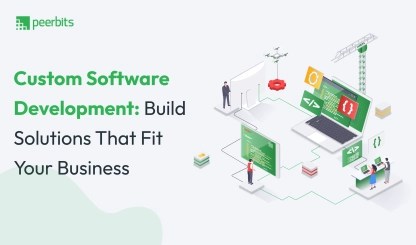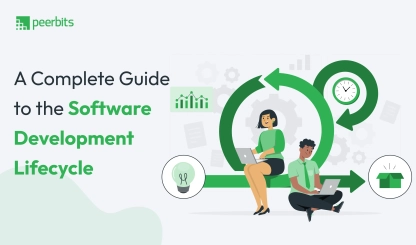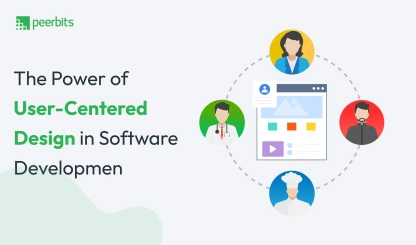Launching a product successfully in software development requires more than just technical expertise. It involves coordinating every detail to meet deadlines and user expectations.
For a software development company, a well-structured software release plan is crucial to avoid delays, bugs, and falling short of market demands, even for the most advanced projects.
As technologies have evolved, so has the complexity of the software development process. And because of that, building a software release schedule has become a growing discipline.
According to Enterprise Management reports, 75% of issues in software are caused because of the lack of a complete software release plan. These issues can later turn into unnecessary cost expenditures and negatively impact your status amongst the target audience.
To help you prevent a series of hassles due to a lack of software release plan in your development endeavors, here’s a detailed guide on how to build a software release plan the right way & ensure a successful software launch.
What is a software release plan?
Software release planning is all about deciding the desired schedule of assorted software release dates and making sure to meet that schedule.
It involves planning, managing, and controlling a software development lifecycle through the stages of developing, testing, deploying, and supporting the software release.
The primary goal of software release planning is to ensure the quality, efficiency, and speed of software delivery. It demands a reliable team & meticulous planning. A well-built software release schedule helps in :
- Managing multiple dependencies,
- Lining up teams,
- Minimizing risks, and
- Ensuring timely delivery, all while meeting user expectations and adapting to market changes.
You can ensure that your team is armed with all the required information to increase the probability of a successful software release. Next, let’s take a look at what a complete software release plan looks like!
What does a software release plan involve?
A successful software launch involves multiple factors that come together to create an effective software rollout strategy and release plan template.

Ideally, some of the core factors that any software release plan should have are as follows:
- Objectives: A software launch strategy should set objectives that meet your business and audience needs.
- High-level scope: A software release plan must help your software development team members understand clearly the high-level scope of your project.
- Rough estimate: It should help you to evaluate the rough estimate of the required workload to successfully develop & launch your software.
- Scope of implementation: It should help you define the list of features and when each feature must be ready so that it’s easier to track the progress.
- Timeframe & budget: It must include the timeframe and budget required for successful software development & release.
Surely, software release plans are necessary, but if you are wondering when is the right time to implement them? Follow ahead.
When should you implement a software release plan?
Software launch strategy is critical for ensuring smooth deployments. Use it when launching major features, handling routine updates, coordinating across teams, or managing complex updates.
It is also essential during high-traffic periods, for large user bases, and for compliance updates. A clear plan reduces errors and boosts user satisfaction. Here are a few major instances where you should use a concrete software release plan:
1. Major feature launch
Launching a big feature? Use a release plan to keep the process organized and reduce the risk of errors.
2. Routine updates
Even small updates need planning to avoid unexpected issues and keep everything running smoothly.
3. High-traffic periods
Releases during peak times, like holiday sales, benefit from careful planning to prevent slowdowns or outages.
4. Cross-team coordination
When multiple teams are involved, a release plan keeps everyone aligned and tasks well-coordinated.
5. Complex updates
For updates with dependencies or system integrations, a release plan helps manage each step effectively.
6. Large user base rollouts
For big user bases, a release plan allows for phased rollouts, minimizing widespread impact from potential issues.
7. Compliance & security updates
Regulatory and security updates require precision, and a plan ensures nothing critical is overlooked.
8. Fast-moving markets
In industries with rapid change, a release plan supports quick responses to market demands without sacrificing quality.
Complete guide to build software release plan
Now that you know what a software release plan is and what it involves, it's time to explore how it can be useful. Let's focus on how to build a solid and effective release plan for your future victory.
Software release planning is divided into two separate parts:
- First-time release plan
- Updates during future iterations
First-time release plan
The first-time software launch plan involves a 9-step process.
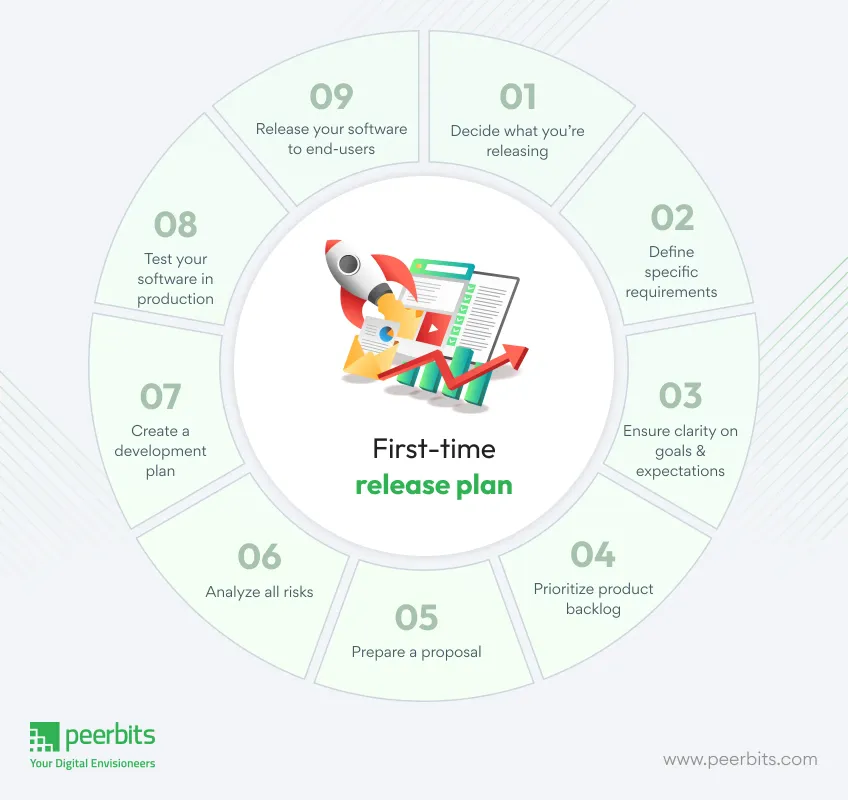
1. Decide what you’re releasing: The first step is to figure out is-what kind of software exactly are you releasing. Is it a web application, mobile app, PWA, or any other type of software?
2. Define specific requirements: The next step is about defining the specific requirements of your software. This involves defining the list of features you want to implement and user flows throughout your software.
3. Ensure clarity on goals & expectations: Once you’ve defined the specific requirements, you need to ensure that they’re well-aligned with your long-term goals as well as expectations. You should focus on story points, in the beginning, to make it easier for all stakeholders to understand project goals & expectations.
4. Prioritize product backlog: Most people treat product backlog as the dumping ground for all ideas, feature requests, bugs, and tasks. But the right way to prioritize your product backlog is to start with the list of tasks that your team needs to complete next and everything they need to focus on after that.
5. Prepare a proposal: Your proposal should forecast how the days leading to the actual software release will unfold. The software release proposal is mostly helpful in defining goals, designating tasks for team members, and setting up a timeframe for project completion.
6. Analyze all risks: Once the proposal is prepared, you need to conduct a risk analysis to discover all possible risks, the probability of whether they’ll happen, and steps to minimize their consequences in case they do.
7. Create a development plan: In order to create a project development plan, you must analyze the product backlog and set priority for each feature that needs to be implemented in the first release.
8. Test your software in production: After you’ve successfully built the first version of your software, you need to perform testing in production (TIP) where the new code changes and code quality are tested on live users rather than in a staging environment.
9. Release your software to end-users: The final step of the process is to launch your software to your end users and monitor its performance closely to ensure everything is running smoothly.

Updates during future iterations
The second part of the software release plan is about all the updates for the future iterations of your software product.
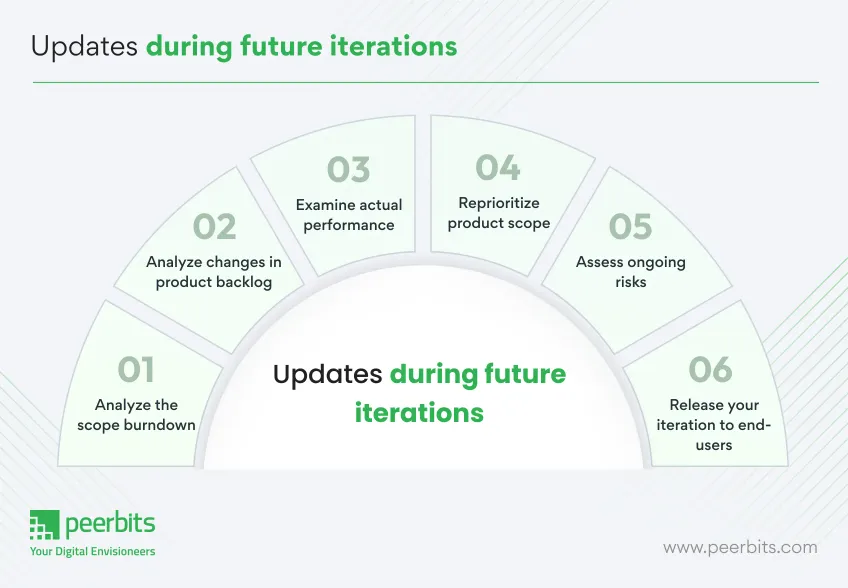
- Analyze the scope burndown: After you’ve successfully released your software, you need to check the scope and find out if there are any tasks remaining with the first-time release.
- Analyze changes in product backlog: Next, you need to consider all tasks & features deleted from the product backlog and reassess their priority. If there are changes that need to be made, you must keep in mind that it will also affect your next software release plan.
- Examine actual performance: You need to examine the performance of personnel & team independently and compare it with the software release plan.
- Reprioritize product scope: After each iteration, you must reprioritize the tasks in your product backlog to ensure a successful software release iteration.
- Assess ongoing risks: If you happen to make any changes to the next release, you must assess the risks and the factors associated with them to minimize their consequences.
- Release your iteration to end-users: Once you’ve followed all steps carefully the next iteration is ready. It’s time to release it to your end-users in the live environment.
Where can a software release plan make a difference?
Based on previous insights, you might assume software release planning can be quite complicated. But, once you find your fundamental goal, it can be extremely useful in a variety of scenarios such as:
1. Project scheduling
The project schedule, also known as the target schedule, is a schedule performance analysis that includes project milestones which are further compared with the actual achievements.
A key metric in this process is the Schedule Performance Index (SPI), which indicates whether your project is on schedule or delayed.
In every agile software development iteration, there are usually 5 project scheduling control steps involved:
- Checking the current status of features
- Performing a thorough review at the end of every iteration
- Making the required changes as per the review
- Assessing the iteration results
- Making the required changes to the project schedule
2. Project budget management
Project budget management is another area where a software launch strategy can be useful. It generally involves defining the total budget of the project.
Budget management in software release planning is more about story points & complexity than defining the total budget. It acts as the foundation to make detailed estimations and form the actual budget later.
Simply, a software release plan helps in controlling the general project budget. Based on the features implemented, it helps to identify if there is any difference between the planned budget and the actual spending.
3. Client & team expectation management
The third area where software release planning has proven to be most useful is client & team expectation management. Now, the majority of client expectation management is mostly about clear communication.
One must be honest & open about expectations from the beginning of the project. And more importantly, you must provide all assumptions and follow all pre-defined goals.
Apart from this, defining goals is also a crucial part of a solid software release plan. It helps to follow goals with minimal fluctuations throughout the project lifecycle.
Backlog, on the other hand, is another important feature of a software release plan. It usually includes storage for all your assumptions regarding the project.
The last important feature of a software release plan is a formalized planning system, which helps in establishing clear & transparent communication among all stakeholders.
As for team expectation management, it’s best to use industry-standard tools that help elevate the performance of your team and make the work more comfortable.
Benefits of software release planning
Now that you’ve learned exactly how to build a software rollout strategy on your own, let’s check out the benefits you will gain if you make a software release roadmap for your project.
1. Lean software development
Lean software development is the first and primary benefit of a software release plan.
It lets you eliminate waste, streamline all processes, and focus on continuous improvement. This, in turn, significantly improves the software’s quality, performance, and usability.
2. Improved release activities
Release activities include scheduling, developing, testing, documenting, distributing, and installing the new software releases for end-users. Now, a software deployment plan helps you to form improved release activities that yield the best results possible. It also supports continuous improvement to minimize trials and errors and deliver better software releases in the market.
3. Better change management
Change requests, which are inevitable in the software development lifecycle, are another benefit of a software release plan.
A software deployment plan helps to discover and enables positive changes to be made in your software product without affecting your services.
Besides that, it also helps to control the configuration items in configuration management, leading us to the next benefit of building a software release schedule.
4. Improved configuration management
Configuration items generally include people, software, and documentation. Now, whenever a problem arises in release management, they’re almost always linked to one or more configuration items.
The configuration management's controlling feature helps to ensure positive changes that support and reinforce improvements in the general software release cycle.
In simple words, a software release schedule improves the overall configuration management in your project and lets you easily track open bugs, new features in the server page, or a tool for developing a web page.
Tools you need for software release management
Effective software release management ensures smooth and timely software delivery. It involves organizing tasks from planning to deployment, making sure each phase is executed efficiently. Using the right tools simplifies these processes and reduces the chances of errors.
Various tools serve different purposes within the release cycle, making it easier to handle everything from code versioning to post-deployment monitoring. Let’s take a look at the essential tools needed for successful software release management.
1. Version control systems
Version control tools like-
- Git,
- GitLab, or
- Bitbucket
These are crucial for managing source code and tracking changes. They allow teams to collaborate smoothly, avoid conflicts, and maintain a clear record of the software’s evolution.
2. Continuous integration/continuous deployment (CI/CD) tools
Tools like-
- Jenkins,
- GitHub Actions, and
- CircleCI
They can automate the process of integrating and deploying code. This ensures quick and consistent releases while minimizing manual errors.
3. Build automation tools
Build tools like-
- Maven,
- Gradle, and
- Ant
They help compile and package the code efficiently. They automate repetitive tasks, saving time and ensuring a consistent build process.
4. Issue and project tracking tools
Platforms like
- Jira,
- Trello, or
- Asana
They are indispensable for tracking project progress, managing tasks, and ensuring accountability among team members. These tools improve communication and lines up the team’s efforts.
5. Release orchestration tools
Tools like:
- Azure DevOps and
- Harness
They help coordinate release processes, manage dependencies, and track performance. These tools effectively manage the entire lifecycle.
6. Testing tools
Automated testing tools like-
- Selenium,
- TestNG, and
- JUnit
They play a significant role in ensuring the software’s reliability. They help detect bugs early, reducing the risk of post-release issues.
7. Monitoring and analytics tools
After deployment, tools like:
- New Relic,
- Prometheus, and
- Splunk
They monitor application performance and user experience. They help quickly identify and resolve any performance bottlenecks.
8. Configuration management tools
Tools like:
- Ansible,
- Puppet, and
- Chef
They allow teams to standardize and manage configurations across environments, ensuring a smooth transition during deployments.
These tools combined provide a framework for managing software releases efficiently. Around 80% of companies nowadays use agile project management methodologies for their businesses, in which software release planning has become a highly preferable choice.
But, the ones who are still beginners, are often confused between release planning and sprint planning, because both focus on repetitive tasks, customer value, and team collaboration.
They may seem similar but they both serve different purposes. Let's explore how!
Release vs sprint planning in agile methodologies: What you need to know
Understanding the difference between release planning and sprint planning is crucial. Release planning sets the strategy for updates over a longer time, while sprint planning targets specific tasks to be completed in one to four weeks. Each plays a key role in project success.
| Key roles | Release Planning | Sprint Planning |
|---|---|---|
| Focus | A general strategy for delivering software updates or new features. | Specific tasks and user stories are to be completed in a single sprint. |
| Timeframe | Long-term; often spans weeks or months. | Short-term; typically one to four weeks. |
| Scope | Covers multiple features or enhancements in a release. | Concentrates on a limited set of features or tasks. |
| Goal | Aligns team objectives with business goals and user needs. | Prioritizes work for the upcoming sprint based on team capacity. |
| Outcome | A roadmap for upcoming releases, including timelines and milestones. | A detailed plan of tasks for the sprint backlog. |
| Flexibility | Less flexible; changes may require significant adjustments. | Highly flexible; changes can be made based on team progress and feedback. |
Conclusion
Developing a software release plan can be challenging, but it’s important for ensuring a smooth and successful development process, in agile environments. A well-defined release plan gives you a complete understanding of your business goals, timelines, and user expectations.
This level of clarity lets you stay in control and ensure that everything lines up with your objectives.
Reliable software development services can help you plan efficiently that increases the chances of a successful launch by reducing the risk of delays, bugs, or errors. It helps coordinate teams, manage dependencies, and maintain focus on delivering quality products within set deadlines.
If you're looking for professional assistance with software development or wish to extend your team, feel free to contact us.

FAQ's
Agile methodologies help us adapt quickly to unexpected changes while keeping the release timeline intact. Tasks are reprioritized, and critical updates are addressed without derailing the overall plan.
We focus on identifying potential risks early through detailed assessments at every stage. Rigorous testing, such as regression and stress tests, minimizes the likelihood of errors during deployment.
Scaling needs are assessed in advance, and infrastructure is optimized to handle increased demand efficiently. This helps maintain performance as your user base expands.
We conduct unit testing for individual components, integration testing for system interactions, performance testing under various conditions, and user acceptance testing (UAT) to verify functionality in real-world scenarios.
Post-launch services include monitoring, troubleshooting, and resolving any performance issues. Maintenance options are available to keep the software up-to-date and functioning smoothly.
Yes, full ownership of the source code and intellectual property will be handed over to you once the project is completed. This includes secure transfer and proper documentation.
Security audits are conducted regularly to detect vulnerabilities. Industry regulations guide our development practices, and data protection measures are integrated throughout the release process.

